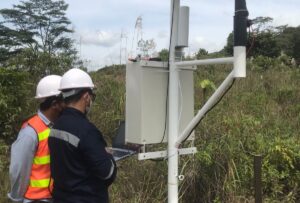Ad: Why a Well-Ventilated Workplace is a Well-Functioning Workplace

Kieran Murphy, founder of ZiggyTec, a prop-tech company offering IoT-based solutions to make your buildings smarter, explains why it is important to keep your workplace well-ventilated.
A rise in air pollution across the globe has brought air quality under scrutiny. According to UNEP, air pollution causes one in nine deaths worldwide. While countries worldwide are taking urgent steps to prevent outdoor air pollution as much as possible, they must also consider that most of our time is spent indoors.
So how can we ensure that our exposure to outdoor air pollution doesn’t happen indoors? One of the simpler ways of doing this is to keep our buildings well-ventilated.
Effects of Poor Ventilation in the Workplace
Increases sick leaves
Multiple studies have shown a correlation between high ventilation rates (VRs) and reduced sick leaves. The cleaner your air is, the lesser the chances of high absenteeism rates in your office.
Affects building structure
When the air in your office is circulated properly, and the temperature and humidity are controlled, the chances of issues with dampness and mould go down significantly, which helps maintain the structure of the building.
Results in sick building syndrome
Poor ventilation, cramped layouts, and other such issues can lead to sick building syndrome, which can cause headaches, sore eyes or throat, cough or wheezing, tiredness, and difficulty concentrating. Having a robust ventilation system can ensure these symptoms are warded away.
Impacts performance
A lack of ventilation usually leads to high levels of CO2, which can lead to a lack of concentration and poor decision-making skills. A study at Harvard confirmed that low ventilation rates negatively impact cognitive function, implying a direct relation between air quality and productivity.
How to Ensure Your Workplace is Well-Ventilated
The HSE recommends that ‘Workplaces must be adequately ventilated…Windows or other openings may provide sufficient ventilation but, where necessary, mechanical ventilation systems should be provided and regularly maintained.’
So, what’s the best way to keep your office ventilated? One way, of course, is to keep our windows closed. But that could result in stale air and high carbon dioxide (CO2) levels, which can lead to rapid breathing, nausea, headaches, and other symptoms.
The next option is to keep our windows open and let the air circulate, which isn’t bad if you live in an area surrounded by greenery; however, if you live in a concrete jungle, this will bring in outdoor air pollution.
A popular way to ensure good ventilation is to install mechanical ventilation equipment, which circulates fresh air through ducts and pipes.
To achieve optimal performance, an indoor air quality monitor can be installed to keep track of air quality standards indoors.
How Indoor Air Quality Can Be Measured
New-age IoT technology enables us to use sensors to acquire air quality data. Measuring temperature and humidity, along with CO2, PM 2.5, and Volatile Organic Compounds (VOCs) levels, can help one determine whether their space has adequate ventilation.
While temperature and humidity can affect your comfort and the building’s structural integrity, high levels of CO2, PM 2.5, and VOCs have a negative impact on one’s health, especially in cases of prolonged exposure.
The bottom line is that the air that surrounds us – the air we breathe in – is vital to our health and well-being. By ventilating our buildings well and keeping an eye on the air quality, we can create an environment where we thrive and live up to our potential.
For more information about IAQ monitoring please contact us today or visit: ZiggyTec.com
















